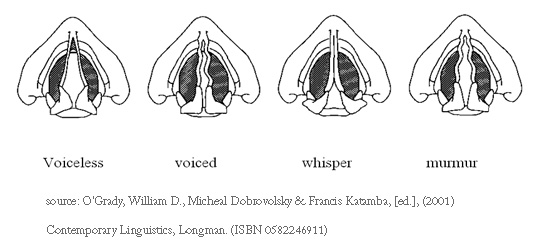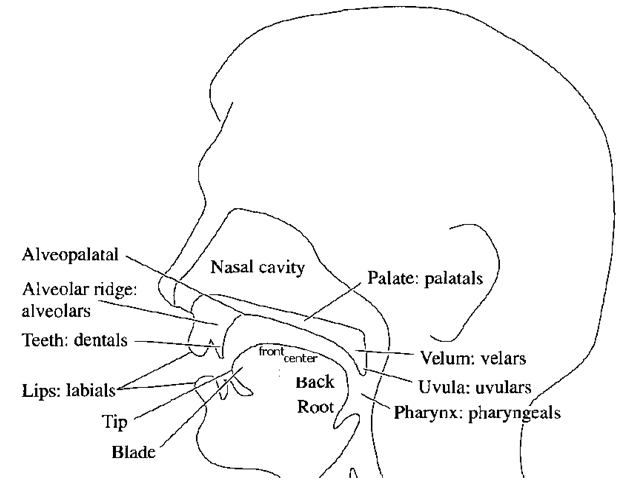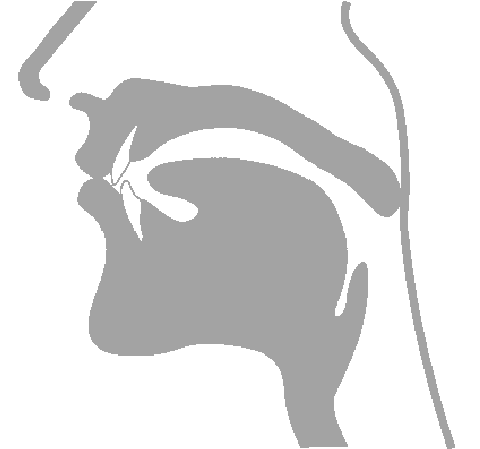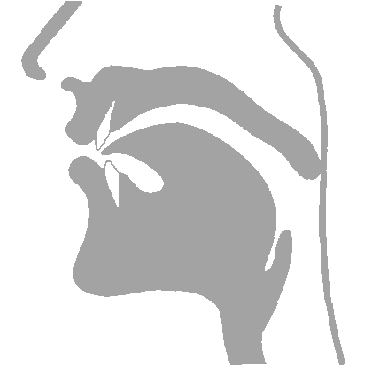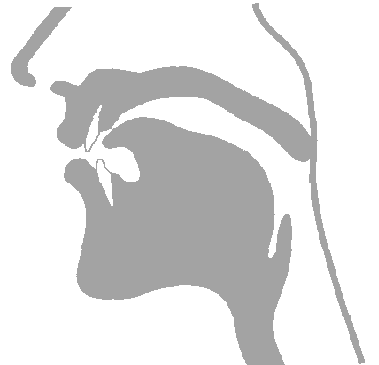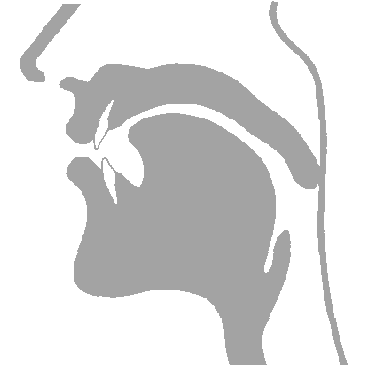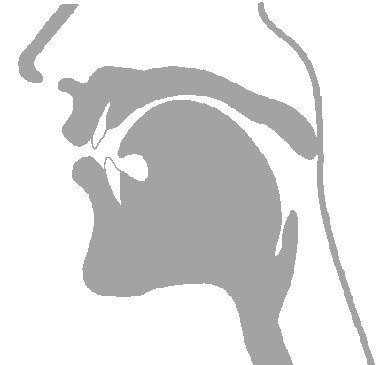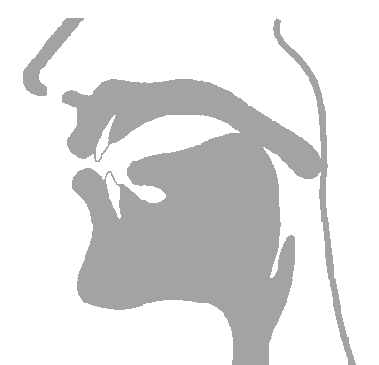PROPERTIES OF SOUNDS
Glottal states
The vocal folds may be positioned in a number of ways to produce different glottal states.
Fig 1 – Glottal states
The first two glottal states (shown in Fig 1) are commonly encountered in most of the world’s languages.
The third describes the glottal state that underlies a common speech phenomenon
Fourth illustrates one of a number of glottal states not encountered in English.
Voicelessness:
When the vocal folds are pulled apart, air passes directly through the glottis.
Any sound made with the vocal folds in the position is said to be voiceless.
e.g. [f], [s], [h]
Voicing:
When the vocal folds are brought close together, but not tightly closed, air passing between them causes them to vibrate, producing sounds that are said to be voiced.
e.g. [v], [z]
Whisper:
Whispering is voiceless, but, the vocal folds are adjusted so that the front portions are pulled close together, while the back portions are apart.
Murmur:
Yet another glottal state produces a murmur, also known as whispery voice.
Sounds produced with this glottal configuration are voiced, but the vocal folds are relaxed to allow enough air to escape to produce a simultaneous whispery effect.
SOUND CLASSES
The sounds of language can be grouped into classes, based on the phonetic properties that they share.
Sounds fall into two major classes – vowels and consonants.
Another class – glides, shares properties of both vowels and consonants.
Vowels, consonants and glides (Syllabic and non-syllabic elements)
Vowels, consonants and glides can be distinguished on the basis of:
– differences in articulation
– acoustic properties
– whether they function as syllabic or non-syllabic elements.
The articulatory difference
Consonantal sounds, which may be voiced or voiceless, are made with a narrow or complete closure in the vocal tract.
The airflow is either blocked momentarily or restricted so much that noise is produced as airflows past the constriction.
Vowels are produced with little obstruction in the vocal tract and are generally voiced.
The acoustic difference
Vowels are more sonorous than consonants, and so we perceive them as louder and longer lasting.
Syllabic and non-syllabic
The greater sonority of vowels allows them to form the basis of syllables.
A syllable can be defined phonetically as a peak of sonority surrounded by less sonorous segments (sonorous elements have a richer sound that non-sonorous ones).
Glides
Glides produce the auditory impression of rapidly articulated vowels.
Glides are produced with an articulation like that of a vowel, however, they move quickly to another articulation. E.g. [j], [w]
Even though they are vowel-like in articulation, glides pattern or function as consonants. E.g. glides can never form the nucleus of a syllable.
Since glides show properties of both vowels and consonants, the terms semivowels and semiconsonants may be used interchangeably with the term glides.
CONSONANT ARTICULATION
Airflow is modified in the oral cavity by the placement of the tongue and the positioning of the lips. These modifications occur at specific places or points of articulation.
Fig 2 – Cutaway view of the vocal tract with places of articulation
PLACES OF ARTICULATION
Each point at which the airstream can be modified to produce a different sound is called a place (or point) of articulation.
Places of articulation are found:
– at the lips
– within the oral cavity
– in the pharynx
– at the glottis.
Labial
Sounds in which the airflow is modified by forming a constriction between the lower lip and the upper lip are referred to as bilabial sounds.
e.g. the first sound in pit
articulation of a bilabial consonant
labio-dental
Sounds in which there is a constriction between the lower lip and the upper teeth are referred to as labio-dental sounds.
e.g. the first sound in fit:
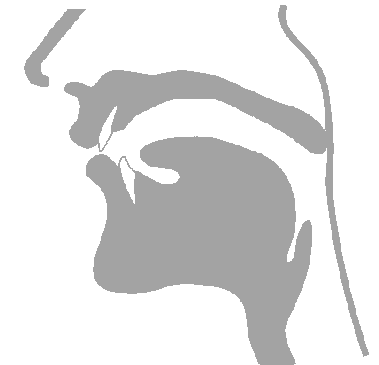
articulation of a labio-dental consonant
Dental
Some phones are produced with the tongue placed against or near the teeth. Such sounds in which there is a constriction between the tip of the tongue and the upper teeth are referred to as dental sounds.
e.g. the first sound in thin:
articulation of a dental consonant
Alveolar
The tongue touches or is brought near the alveolar ridge in the production of certain sounds. Sounds in which there is a constriction between the blade or tip of the tongue and the alveolar ridge are called alveolar sounds.
e.g. the first sound in sin
Palato-Alveolar
Just behind the alveolar ridge, the roof of the mouth rises sharply. This area is known as the palato-alveolar or post alveolar (and alveopalatal in some books) area.
Sounds in which there is a constriction between the blade of the tongue and the palato-alveolar (or post-alveolar) are called palato-alveolar sounds.
e.g. the first sound in ship
Palatal
The highest part of the roof of the mouth is called the (hard) palate.
Sounds in which there is a constriction between the front of the tongue and the hard palate are called palatal sounds.
e.g. the first sound in yes: /jes/
Velar
Sounds in which there is a constriction between the back of the tongue and the velum are called velar sounds.
e.g. the first sound in cool: /kul/
The glide [w] as in the first sound of wet is called a labiovelar sound as the tongue is raised near the velum and the lips are rounded at the same time.
Uvular
Sounds made with the tongue near or touching the uvula are called uvular sounds. English has no uvulars.
Pharyngeal
Sounds made through modification of airflow in the pharyngeal region by retracting the tongue or constricting the pharynx are called pharyngeal sounds.
Glottal
Sounds produced by using the vocal folds as the primary articulators are called glottal sounds.
e.g. the first sound in hug

